Quadcopters can perform various actions in the air that are inaccessible to humans.
Take a photo from a bird's eye view? - You are welcome!
Quickly deliver a small load for a couple of kilometers? - No problems!
Shoot the dizzying descent on the black track, without losing sight of you for a second? - No question at all!
Even such a trifle as a group selfie, under the force of this turntable. Miniature drones can be used in search operations, participate in air races or serve as a children's toy - the main thing is to choose the right model for specific purposes.

Content:
The best manufacturers of quadcopters - which company to choose
Every year the list of quadcopter manufacturers is updated with new names. Unfortunately, not all of them succeed, and some initially aim at the budget segment of the market, sacrificing the quality of their drones. In any case, it is better to spend one time on a good brand model than to buy cheap turntables every two months instead of failing.
The best multicopters for beginners and pros today are offered by companies:
1. DJI Innovations
2. 3D Robotics (3DR)
3. UDI RC
4. Aeryon systems
5. Blade - "quadrocopter" branch of Horizon Hobby
6. Syma
In our ranking You will find several interesting models from these manufacturers. But if none of them meet your requirements, we advise you to familiarize yourself with the recommendations of specialists in the choice of four-rotor UAVs - they will help you find the best option yourself.
The device and the principle of the quadcopter
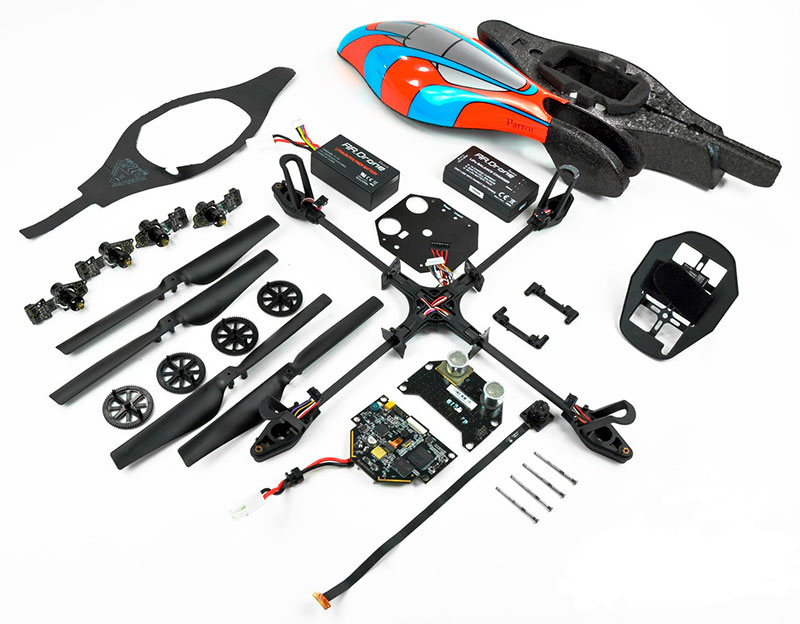
A quadcopter is a relatively uncomplicated aircraft, which, with certain skills and basic knowledge of radio electronics, can be assembled by itself from materials at hand or individual parts. But even if you acquire an RTF device (that is, “ready to fly”), you need to know at least approximately how it is arranged and due to what it rises into the air.
Any multicopter consists of several basic elements:
- Enclosures;
- Screws - usually four, but there are models with 3, 6 and even 8 blades;
- Paired synchronous motors;
- The control unit - an electronic board with a receiver processing signals from the console, and a set of sensors or, at worst, a gyroscope;
- Battery and remote control;
- Some "adult" models are equipped with a built-in digital camera.
The more complex and expensive the model of the drone, the more various additional sensors it will have: GPS, accelerometer, barometer, sonar - this is not a complete list of what multicopters are “stuffing” today.
But no matter how complex the device of the aircraft, the basic principle of its operation does not change. Through the receiver, the drone board receives radio signals - commands from the remote control. In accordance with them, it slows down or accelerates the engines, thereby forcing the unit to maneuver in the air.
At the same time, the microcontroller constantly monitors the indicators of the sensors (or the deviation of the axes of the gyroscopes), adjusting the speed of each screw separately. For takeoff and vertical landing, the drone starts all the engines at the same speed, for turning and performing various tricks - it speeds up one and slows down the others.
Types of quadcopters
Actually, quadrocopters are just a special case of radio-controlled drones equipped with four blades. Yes - the most common, but not the only one.
Four-bladed (actually quadrocopters)
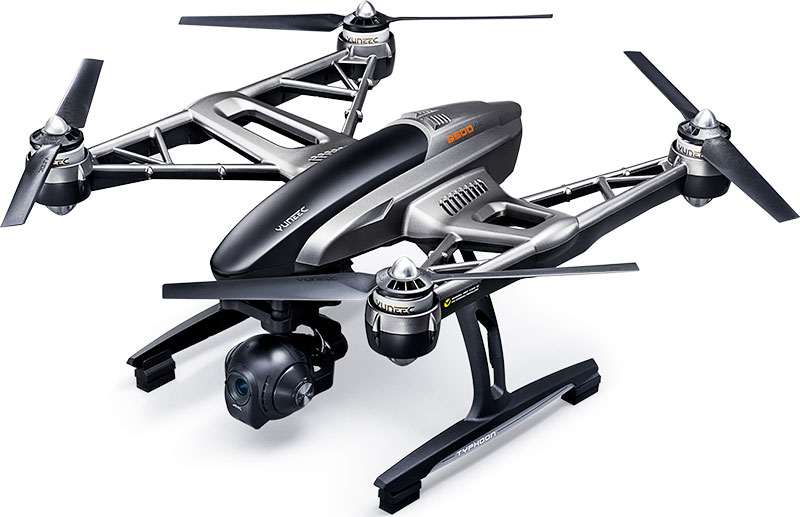
This family has gained particular popularity among multikopter because of its versatility and optimal size with good maneuverability. Drones with 4 blades gain altitude at speeds of up to 5 m / s and are reduced by 4 m / s. Their maximum horizontal flight speed reaches 25 m / s.
Most four-rotor vehicles catch the signal from the console within a radius of 2 km, which allows them to be used for a fairly wide range of tasks. Many models (of advanced, of course) are equipped with photo and video cameras with a resolution of up to 13 megapixels and a viewing angle of up to 100 °. The battery capacity of an average copter lasts about 15-25 minutes of flight, although much depends on the size of the turntable. Some quad drones can fit in the palm of your hand and weigh about 15 grams, while others can reach half a meter in diameter and pull on 3 kg.
Pros:
- Huge selection of a variety of models;
- Availability of photo and video cameras with a good viewing angle;
- High speed;
- Good range and good maneuverability.
Minuses:
- At failure of at least one screw fall.
Trikoptery
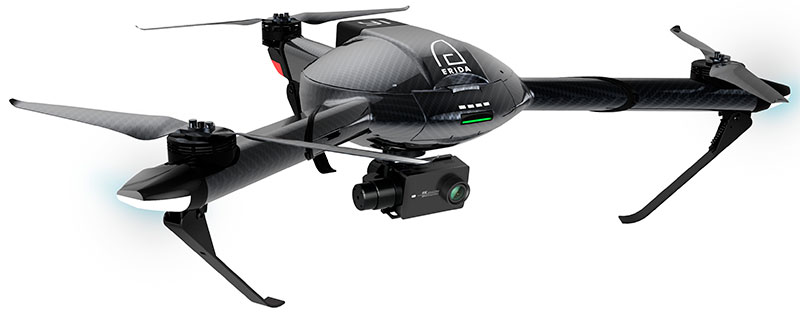
Such drones have only 3 screws and are equipped with low-power collector engines. As a rule, these are not very large vehicles with excellent maneuverability. Their blades often have special protection, which reduces the risk of screw failure during an accidental fall, and the operator himself from possible injuries at launch.
Trikoptery can fly in a radius of 30-50 m from the control panel and be in the air for up to 10 minutes, but it takes about an hour to charge the battery via the USB port. The dimensions of the three-bladed models are also impressive with their diversity: among them are both “indoor” drones measuring 5x4x4 cm, and 40-centimeter devices weighing up to 1.5 kg.
Pros:
- Maximum maneuverability;
- Compact size and relatively low weight;
- The presence of protection screws;
- Low cost.
Minuses:
- The lack of a regular camera;
- A small range of the signal, but for a toy, which is a tricopter, it is enough.
Hexcopters

It is fully functional devices with 6 screws capable of rising to a great height, and already with a weight of up to 10 kg. Such models are characterized by improved balancing and reliability, since even if one of the screws fails, the device will be able to land without crashing. In the basic configuration, "six-winged" drones are often equipped with cameras with a resolution of up to 15 megapixels, and a large battery allows them to be in the air for up to 40 minutes.
And yet the main advantage of these devices is the range of the remote control - about 6 km. But their speed characteristics are slightly worse than those of quadcopters: up to 5 m / s on take-off, up to 3 on descending and up to 20 on horizontal flight. Well, let's not forget about the dimensions: in diameter, 6-rotor drones reach 0.5-1 m and weight from 5 to 10 kg.
Pros:
- They can already lift and transport small loads;
- Completed with good cameras;
- High flight range and time spent in the air;
- Flight stability and the ability to land in case of failure of one of the engines.
Minuses:
- Low maneuverability;
- High price.
Oktokoptery
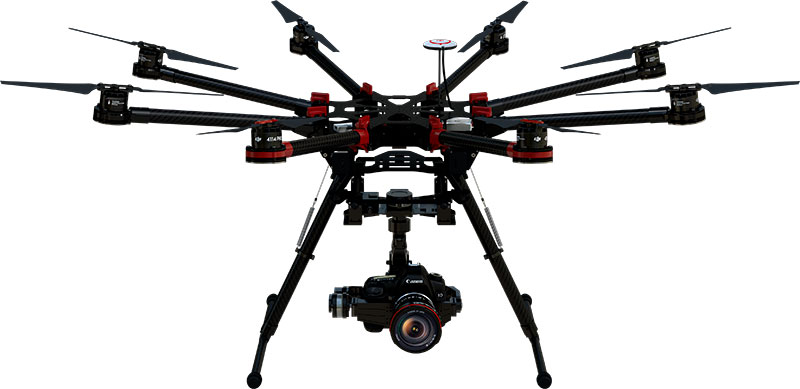
The largest copters (up to 1.5 m in diameter) with 8 independent screws. Such devices are even safer and more stable in the air than hexes: in case of failure of 1-2 screws, the UAV can even continue the task. The carrying capacity of eight-blade drones reaches 20 kg, although their own weight does not exceed 9-10 kg.
Alas, for such opportunities have to pay. The flight range of modern oktokopter is usually no more than 1-1.5 km, the time in the air is 15-30 minutes. Devices take off and land with a speed of up to 2-3 m / s, and in a straight line they develop “only” 15 m / s.
Pros:
- Capable of lifting heavy loads;
- Maximum reliability and stability in flight;
- The ability to continue to move in case of failure of 1 or 2 engines;
- The presence of a regular camera;
- Enough long time in the air.
Minuses:
- Big sizes;
- Huge cost.
Quadcopter selection options
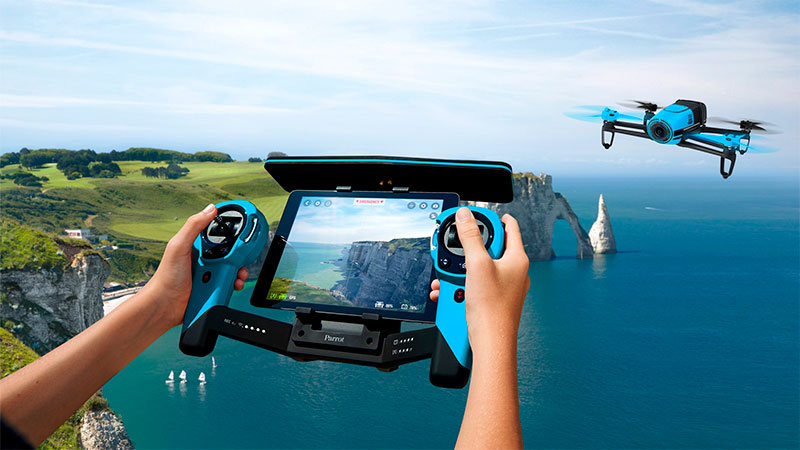
Dimensions
Overall drones can be used to solve a wide range of tasks, but compact models are more maneuverable.
Understanding what size you need a copter will help familiarity with their varieties:
1. Nano
This prefix to the name get miniature drones for home use. You can try to run such a baby on the street, but only in calm weather and if you have experience with such turntables. Nano three- and quadrocopters, despite their modest size and weight, are quite strong, so they are ideal for training.
2. Mini
Amateur drones that can be used both at home and on the street. These inexpensive models will suit teenagers and adult amateurs as the first copter "on trial".
3. Average
Quite sturdy models with good engines. Suitable for competitions, stunts, as well as amateur aerial photography.
4. Large copters
Here you can safely take models with 6 and 8 blades. These are the most expensive drones, which are suitable for professional shooting and transportation of goods and are currently the most technologically advanced.
Range, time and flight speed
There are three main criteria that will determine whether the selected driver is suitable for performing a particular function.
Range of flight:
1. For an amateur who wants to just play around with the drone or try tricks without keeping the device in view, 500 meters is enough with his head.
2. The child does not need a long range at all, otherwise he will not be interested - 100-200 m is more than enough.
3. Those who are going to use the drone to solve professional problems, it is necessary that he could fly off from the console for a kilometer and more.
The long flight time of the multicopter, of course, greatly expands its capabilities, but also reflects on the cost of the device. We'll have to seriously overpay for a more capacious battery, which will allow the car to stay in the air longer than the standard 15-20 minutes.
As for speed, here everyone decides for himself how much he wants to squeeze out of his drone. For a beginner or an amateur, the device that accelerates to 30-40 km / h is enough, but for those who want to take part in races, you need a fast model that can reach speeds of up to 100 km / h.
Battery
The more powerful the battery is in your device, the longer it will last in the air. However, the charge will depend on the consumption of engines.
The more motors installed in the device and the higher their total energy consumption, the more capacious the battery must be, otherwise you should not count on a long flight:
1. The cheapest batteries installed on low-cost drones have a capacity from 1100 to 2200 mAh (values below 1000 should be considered only if you purchase a small “homemade” toy).
2. Models with batteries with a capacity of 2800-8000 mA • h fall into the middle price category.
3. On an expensive and powerful dolgolet should be a battery with the characteristics of 10,000-22,000 mAh.
Pay attention to the discharge current of the battery (indicated by a digit in front of the letter "C" on the label). Here it is also desirable to choose the largest values - this will allow you to easily bring the car to maximum speed. In addition, over time, the batteries begin to "sag" on the strength of the current, and if you have a supply, you will not need to change the battery soon.
Control type
Modern copters transmit and receive radio signals at different frequencies, each of which can have its advantages and disadvantages:
1. 900 GHz - drones operating at this frequency will not be able to fly off the console further than 500 m, but the signal on them easily passes through any obstacles (trees, high-rise buildings, etc.).
2. 1.2-1.3 GHz - the reception range does not exceed 1 km, the signals through the obstacles are worse, but still pass.
3. 2.4 GHz is the most common frequency. On it, the devices can pick up signals from the console at a distance of up to 2 km.However, radio waves will be difficult to break through any obstacles, so these models of unmanned devices are taken exclusively for flying in open areas.
When buying a quadcopter also pay attention to the number of communication channels provided in your model. There can be from 4 to 10 here, and the more channels a receiver-transmitter couple uses, the more maneuvers the aircraft can perform.
Also produced drones with integrated Bluetooth. And although here the range is seriously limited, thanks to him, it becomes possible to control the flight of the drone from a smartphone or tablet (through a special application).
Another option for communicating with a quadcopter is Wi-Fi. The range of the signal here is also small, but it becomes possible to broadcast or immediately record the video captured by the standard camera in real time.
The list of signaling technologies is not limited to this. Every serious manufacturing company today is closely engaged in the development of their own ways of communicating with UAVs. But which of them will be more effective - time will tell.
Body material
The strength and weight of your drone depends on it. For small quadcopters, the fabrication material doesn’t matter much, since they are fairly resistant to falling even from a very large height. But the larger the model chosen, the more important the strength indicators for it.
Here are the following options:
1. Extruded foam
Fragile, but very light and maintainable. Not so afraid of falls as a point blow to the body.
2. Plastic
In general, good material for a drone, but only if it is not too thin and has at least medium strength.
3. Carbon
Would be perfect if not for its high cost.
4. Aluminum
It has good durability, but of all the materials listed, it is the hardest.
Camera presence
The camera on the quadcopter may be amateur or professional, and may be absent altogether. Let us consider all cases:
1. Quadcopters without a camera are suitable for a beginner or a child, as they simply cannot simultaneously shoot and pilot the device.
2. Amateur cameras (built into the body) have a low resolution and do not produce better quality pictures. However, for private photography and video they are quite enough.
3. The external (removable) camera on the quadcopter is needed only by professionals. Such devices will allow high-quality shooting at maximum speed. But to install heavy equipment, you need a drone with sufficient payload and stability in flight.
If you choose a drone with a camera, it is better to take a model with an additional remote control, since at the same time it is very difficult to pilot and control the shooting equipment.
Additional features and capabilities
Practically all quadcopters of an average price category and above have a certain set of additional functions. Whether you need them or not - decide for yourself:
1. Autopilot - when it is turned on, the device will fly to its destination without external control.
2. Returning to the point of departure - the drone will return to where it took off from (take care of this feature, since the copter is not a pigeon and does not recognize obstacles on the way back).
3. Flight after goal - the copter will be able to follow the moving object.
4. Following the smartphone is a function similar to the previous one, but already tied to the control panel or smartphone.
5. Flying through points - allows you to set a more complex route.
6. FPV - first person mode. That is, an opportunity to see in special glasses everything as the multikopter "sees".
7. Stabilization system - causes the drone to hang in the air, if the remote control stopped receiving commands.
8. Recognition of objects and gestures.
Which quadcopter to choose
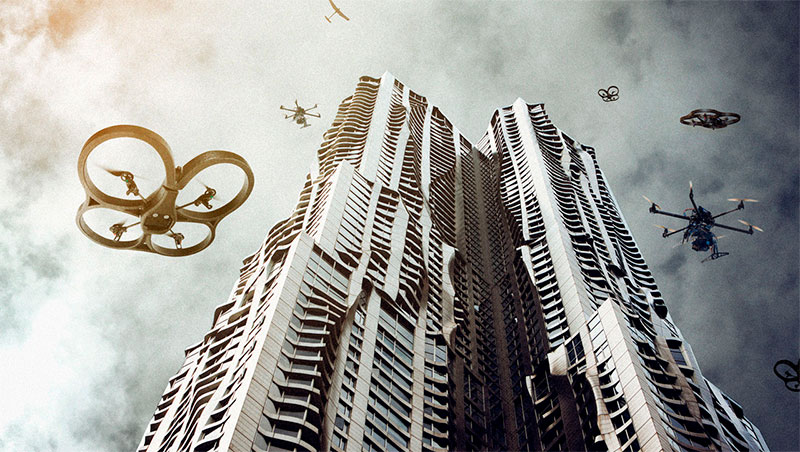
1. As a gift to a child, it is better to choose a three-piece or quadrocopter without a camera, which is small in size (up to 20-30 cm in diameter) - maneuverable, lightweight and convenient. The number of functions here may be minimal, but the protection of the blades is required.The flight distance for a drone toy should not exceed 100–200 m, but it is desirable that its duration be at least 10–15 minutes.
2. For absolute beginners, compact copters up to 30-40 cm in diameter will also work, but with an integrated camera - even if an amateur one. The range of action from 200 to 500 m is sufficient, high speed is also not required - optimally 40-50 km / h. Well, if the model will support control through the application on the smartphone and have some simple but interesting functions (flight after goal, “follow me”, etc.).
3. If you are an extreme sportsman, and you need a kopter, which will remove your stunts from a good angle, purchase a professional device with an external camera. It is important that he develops a speed of at least 60-80 km / h and can fly 200-300 meters away from you without losing touch.
4. Fans of traveling and making beautiful photos on the road will suit a large quad or hexacopter. Due to the good flight range and maximum stability in the air, such a device will bring you gorgeous pictures taken by a regular or outdoor camera within a radius of 1-6 km. Of the functions you need GPS, autopilot, return to the point. If you have enough money and piloting experience, feel free to buy a model with the FPV mode, then you will be able to explore the surroundings and remote corners with your own eyes.
5. If you are a professional photographer or videographer, a hex-octocopter will help you out. It can even hang a heavy camera with stabilization and get luxurious shots of wildlife or crowded holidays. The main thing in such a device is a load carrying capacity sufficient for carrying the equipment and a maximum range of flight (from 1 km and more).
How much are the copters
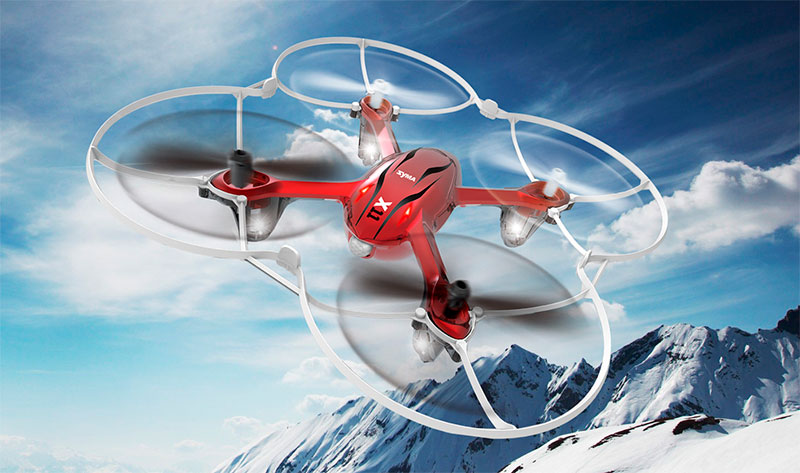
1. Simple tricopter toys are sold at prices ranging from 1,500 to 5,000 rubles. The same children's models, but with four screws you can buy for 900-10000 rubles.
2. Full-fledged “adult” drones with 4 blades start from 8000 and reach 600 thousand.
3. The cost of hexacopter is in the range of 80-500 thousand rubles.
4. For oktokopter will have to pay from 120 thousand to 1.3 million rubles.
It will be interesting to friends too







